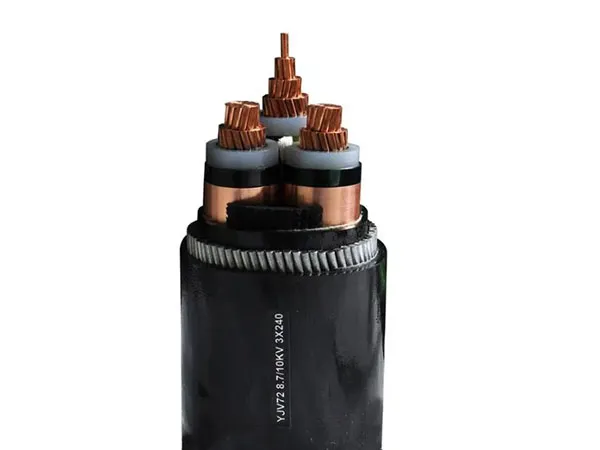Time: 2025-03-26 16:04:52 Source: Henan Province Jianyun Cable Co., Ltd.

Medium Voltage (MV) Power Cables are critical components in modern electrical infrastructure, bridging the gap between high-voltage transmission lines and low-voltage distribution systems. Used across industries like utilities, manufacturing, and renewable energy, these cables ensure reliable power delivery for a wide range of applications. In this article, we’ll explore the essentials of MV power cables by addressing key questions from various angles—technical, practical, and market-related—while providing insights for enthusiasts, engineers, and decision-makers alike.
Medium Voltage Power Cables are electrical cables designed to transmit power at voltages typically ranging from 1 kV to 35 kV, though definitions can vary by standard (e.g., ANSI/IEEE or IEC). Unlike low-voltage cables used in homes or small offices, MV cables handle higher electrical loads, making them ideal for industrial plants, substations, and urban power grids. Their construction includes conductors (usually copper or aluminum), insulation (like XLPE or EPR), and protective layers to withstand environmental and electrical stresses.
The design of an MV power cable is a marvel of engineering, tailored to ensure safety and efficiency. Here’s a breakdown of its core components:
These components work together to deliver power reliably, even in harsh conditions like underground installations or extreme weather.

MV power cables play a pivotal role in various settings:
For example, in solar PV plants, MV cables link power stations to local substations, optimizing energy transfer while minimizing losses.
Standards ensure MV cables meet safety and performance benchmarks. Common ones include:
Compliance with these standards guarantees durability, electrical stability, and compatibility with local regulations.
Here’s a concise comparison in table form:
| Aspect | Benefits | Challenges |
|---|---|---|
| Efficiency | High power transmission with low losses | Requires precise installation |
| Durability | Long lifespan (20-30 years) | Susceptible to insulation aging |
| Versatility | Suitable for wet/dry, buried/aerial use | Higher initial cost than low-voltage |
| Safety | Robust insulation reduces risks | Complex maintenance in fault scenarios |
These factors make MV cables a worthwhile investment despite challenges like installation complexity or environmental wear.
Selecting an MV power cable depends on several criteria:
Consulting with manufacturers or technical experts can refine your choice, ensuring optimal performance and longevity.

The global MV power cable market is booming, projected to grow from USD 51.34 billion in 2025 to USD 66.78 billion by 2030 (Mordor Intelligence). Key drivers include:
Asia-Pacific leads this growth, fueled by rapid industrialization and electrification projects in countries like China and India.
Testing ensures MV cables perform reliably over decades. Common methods include:
Maintenance involves regular inspections, especially in harsh environments, to prevent failures from moisture ingress or mechanical damage.
Medium Voltage Power Cables are the unsung heroes of our electrified world, enabling everything from industrial operations to renewable energy integration. Understanding their construction, applications, and market trends empowers businesses and engineers to make informed decisions. Whether you’re upgrading a power grid or designing a solar plant, MV cables offer the reliability and efficiency needed to keep the lights on.
Keywords: Medium Voltage Power Cable, MV Cable, power distribution, electrical infrastructure, XLPE insulation, EPR insulation, copper conductor, aluminum conductor, voltage rating, renewable energy, industrial applications, cable standards, market growth, cable testing.